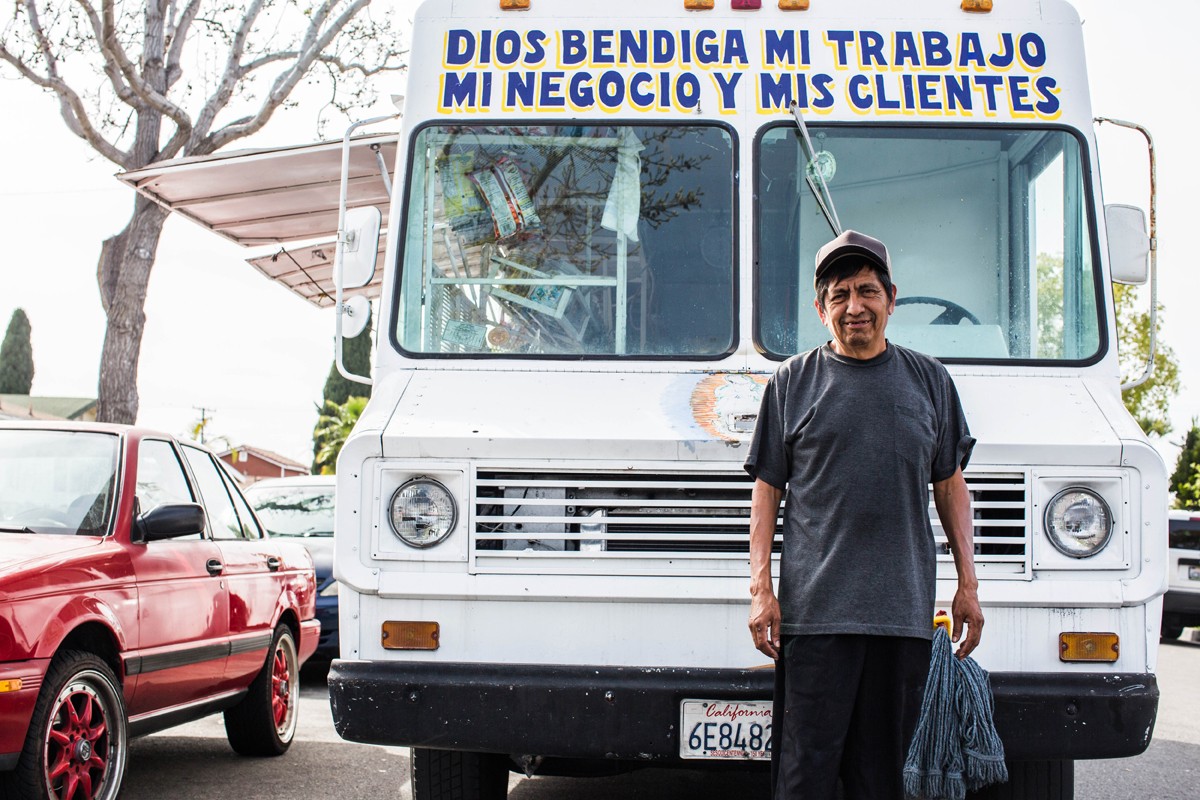
Tell anyone in Orange County that you’re from Santa Ana, and you only get two reactions. The most common one by far is a facial expression—a smirk, a retch, a laugh, a twitch, something—that’s then followed by a litany of the city’s sins. Too many gangs, too many immigrants, too many people dwelling in one house, too dangerous, too dirty, too corrupt, too radical, too loud, too brown—really, just too Mexican. They hear about changes happening in downtown, but no way they’re traveling there . . . yet.
Or you get the other, seemingly nicer one: Santa Ana is cool! It’s gotten “safer” and “better,” but we can still do better if—if we get more development, more cool restaurants, more hipster bars, more diverse (read: fewer Mexicans). That we’re on the cusp of becoming the best Santa Ana that has ever existed, one that’s finally worthy of becoming a destination, or at least a spot for Sunday brunch with the girlfriend’s parents who live in Mission Viejo and whose grandparents graduated from Santa Ana High School, class of ’65, back when things in the city were . . . better.
For those of you who can’t accept Santa Ana as it is—already the greatest city in Orange County—I have this to say: Fuck you. Fuck you for thinking your boring-ass suburb is better, safer, cleaner, richer—everything you think Santa Ana isn’t. Fuck you for fearing us. Fuck you for only visiting us after reading the latest breathless travelogue that treats us like a Bhutanese village in Orange Coast, Thrillist, Refinery29 and even this fishwrap. You’re only now realizing how much we kick ass after folks decided to dress up a small part of downtown (DTSA, in their lingo) while praying desperately that visitors ignore the rest? Stick it up your ass—we’ll always be the Golden City, with or without your approval.
The haters will always hate, but it’s the latter, seemingly benevolent people who embody everything wrong with how OC thinks about my hometown. The common mistake for people who have bought into this idea that we’re on the cusp of something big is that they look at the downtown and think it symbolizes Santa Ana as a whole. The truth is that downtown Santa Ana only makes up a small fraction of the city while the rest of it is still practically the same, save for a few newly paved streets and the widening of Bristol Street. The truth is, only Santaneros rep the other Santa Ana, the real SanTana, the one all those cheesy promo videos never show yet serves as the lifeblood of the whole town.
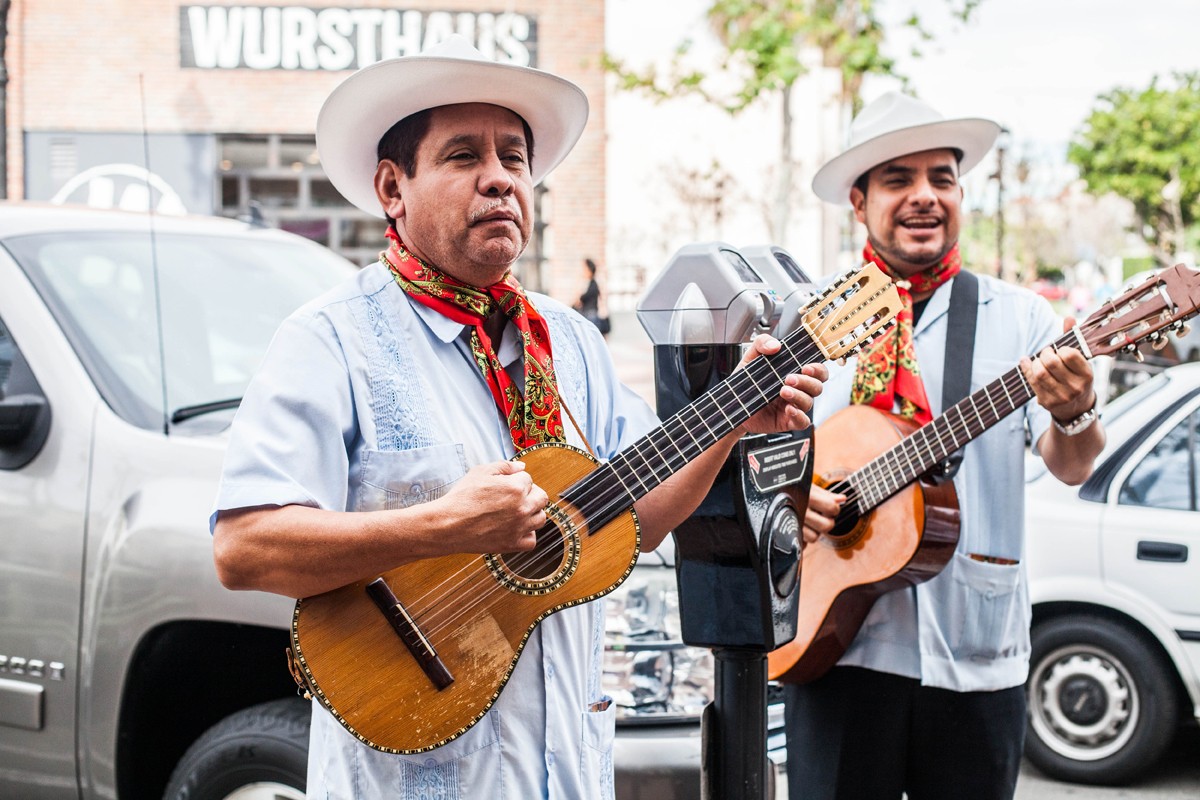
Out here, the chinitos at the liquor stores are still down to sell you a single beer for a buck fifty and a loosie for 50 cents. Old men and women wake you up every trash day, picking through dumpsters and trash cans for all the recyclables you stupidly threw away. Here, you can drink your chela outside with some veteranos and hear their prison stories while watching two dogs (no collars, unspayed, balls still hanging) in heat get it on in the middle of the day, in the middle of the street. Unapologetic, crazy, big, bad SanTana.
We’re OC’s id—the true place of liberty in Reaganland. And that drives the rest of Orange County insane. They’d rather come up with petty monikers such as “Stabba Ana” or “Chuntana” in order to put us down, but fuck you! We Santaneros have read what y’all been leaving on the websites of the Orange County Register and OC Weekly. I’d like to see those same vatos come over here and actually say that to our face—we’ll fuck you up!
But something interesting is happening. The very things that made Santa Ana look so authentically appealing to new investors and residents in the first place—the pastel-colored façades; the nonstop soccer on school fields, front lawns and even parking lots; the rough-yet-charming-and-always-pulsating-with-life edges that no other OC town has—are the very qualities that are now in more danger than ever before. City officials are getting ready to remake the whole town, not just downtown, in their Brave New Urbanist image. So it’s time to fight. Unless we learn to love who and what we are, all of it—from the Foodbeast kids to the eloteros, Noche de Altares to Grand Central Arts Center—the very reasons that make Santa Ana the top of OC will disappear.
I should know. Born and raised in Santa Ana, I’ve managed to kick it with all strata of people this city hosts. I’ve done so many things both to and in Santa Ana: rocked out at greaser parties with punks on Standard, played handball with cholos in Delhi, gotten drunk with the poets and artists atop the highest buildings, even discussed politics at Students for a Democratic Society meetings with socialists at Santa Ana College. I’m the editor of a zine, Santanero, a nearly 4-year-old art publication riddled with slander and defamations of character. I’ve been a lunch lady at more than a dozen different elementary, middle and high schools in Santa Ana. I’ve rubbed elbows with the city’s wealthiest property owners and most powerful politicians as they’ve shared their thoughts on how they’d like to shape and change my hometown while I listened, biting my tongue.
[
Even as a little kid, I got the sense there was something unique about living in Santa Ana, where having thick-ass skin and working hard is a requirement. I used to play Street Fighter II at the liquor store by my family’s clothing shop. Every Friday, I would see about 10 vans pull up and drop off dozens of field workers, men and women, the brownest people I had ever seen—strawberry-stained paychecks in hand, their pants covered in dust and red from head to toe. The liquor store immediately reeked of el campo as soon as they walked in. That image of them standing in line, looking as tired as they were but looking forward to the weekend and promise of a better life, is burned into my mind forever. As I got older and kept seeing the same scene, I realized the rest of Orange County was like life on easy street—and that Santa Ana’s way was something to defend.
* * * * *

I think 2008 is a good place to start. That’s the year the Crosby, that wondrous restaurant/bar, opened its doors and blew the whole gentrification thing wide open—the downtown never saw anything quite like it. The Crosby was unifying, barrier-breaking, and it emitted a sense that the youthful, multicultural togetherness that we were all witnessing within its dark space just might spread into the rest of the city and put an end to the days of hateful, blinding violent ignorance directed at Santa Ana. I remember standing in the kitchen, working as a cook, and seeing a type of people I had never seen before in the city walk through the door. Later, I learned they were called “hipsters,” they had to be made fun of—and they weren’t going away.
From that moment on, the winds of change hit every corner of downtown. People wanted more, and property owners got wise to it all. Mexican-owned businesses that had operated for decades were getting the bum’s rush out and replaced with all things—anything—new. All of a sudden, Santa Ana was good enough for non-Mexicans again.
Backdoor maneuvering started. The City Council drafted a “Renaissance Plan,” the blueprints for a gentrification master project. They also began the initial stages of envisioning a 4-mile, $250 million light-rail line now scheduled to open by 2019, designed to rip right through La Cuatro, the Fourth Street that once passed as downtown Orange County, which whites abandoned in the 1960s to Mexicans who saved the very buildings that the grandchildren of those white-flight gabachos now desire.
It was a different feeling than when Santa Ana first took a shot at being cool for the rest of OC—in the early 2000s, when the first lofts were finally finished, artists actually populated the Artists Village, and the über-hip Costa Mesa restaurants Memphis and the Gypsy Den strolled into town. Back when I would play the open mic at the Gypsy Den on Thursdays, I’d talk to a lot of different people from out of town and some would admit to visiting Santa Ana mainly because they heard it was “really ghetto.” They had grown up with adults telling them horror stories, and now they were old enough to see the place for themselves. They actually liked the thrill of not knowing what to expect—whatever the fuck that means.

Violent Stabba Ana: It’s something OC residents have porned out on for decades, and they are doing so again after the March 3 stabbing death of 23-year-old Nathan Joe Alfaro of Westminster during a show at the recently opened Underground DTSA club. Back in the 1940s, the then-Santa Ana Register devoted weeks of coverage to a supposed pachuco invasion from Los Angeles terrorizing residents. During the late ’60s, that same rag blared headlines about rampaging “negroes” who had joined the local Black Panther Party chapter and the Mexican kids who joined them during a downtown riot sparked by a racist theater owner. Why, just last month, the Register did a front-page, weapy-moany feature about the increase in shootings this year—catnip for the Barcalounger set. To think some people look at our town as if it were a theme park is straight-up weird. Someone should really write their thesis on this because these people actually exist and some are not ashamed to admit it.
[
But those were Santa Ana’s golden years—when downtown and the rest of the city were overwhelmingly Mexican, when the hipsters were just curiosities, when the city’s actual white residents still refused to visit because there were too many quinceañera shops. There was the freedom to be whatever the fuck you wanted. Ironically, it’s because of this bohemian scene that our city officials began to smell the potential dollars at stake and, thus, the opportunity to pivot toward the hipsters. City officials had pushed downtown as an artists’ colony since 1994, even painting “Arts and Culture” on our iconic water tower. But in 2006, a new slogan went up: “Downtown Orange County.” We were now OC’s shiniest new toy, artists and residents be damned.
Soon after came a people who even the OG white hipsters couldn’t help from biting their steez: Asian hipsters. No shame in their game, you know? But seeing all these Ray Ban-sporting, IM King-wearing Frenchified young people partying in the hip-hop mecca that was the Crosby made it easier for closet Mexican hipsters to embrace the Chipster within. Together, hipster Asians and Chipsters Instagrammed and tweeted and Facebooked and Yelped DTSA to new notoriety, bringing in more money, more restaurants, more businesses. It was a hell of a monkey wrench thrown into the debate about gentrification. Before, it was white people invading our downtown—and gabachos are easy to vilify as racists and outsiders. But how could you talk trash on kids of color who graduated from Saddleback High and wanted to pig out on shrimp and grits at Little Sparrow? How could you argue gentrification was racist when it was Vietnamese and white kids going to the Yost Theater, a place that had been exclusively Mexican for generations? People did, but it was an argument that didn’t hold as much power anymore.
I’m one of those Chipsters, kinda. Those hipsters, by just being, sent the message that Santa Ana’s days of segregation and race-trashing might come to an end, that we could learn to co-exist with anyone and everyone. My generation of Santaneros really felt we could actualize a different Santa Ana, one where we felt the barrios remained sacred and gentrification-free while we sinned in DTSA. However, that dream came to an end two years ago, when Kim Pham was killed just outside the Crosby, a death that sparked national headlines that let everyone know Santa Ana was just not there yet.
The downtown quickly emptied (except for the East End, where the Chase family had essentially leveled the old Fiesta Marketplace and replaced it with a hipster garden of foodie, film and fashion delights). The Crosby closed, along with the pioneering Memphis At the Santora. Business fell for the remaining businesses by as much as 75 percent, as the hipster Asians and their multicultural brethren simply weren’t coming back.
Our generation of Santaneros could’ve mustered up the courage in others to actually live and not just play in Santa Ana, by hanging with us back in our hoods instead of just meeting at the neutral grounds of bars and eateries. And that could’ve exposed our compas to more of OC than just the blocks they knew. Instead, true diversity and all the good things it brings flickered away by candlelight when mourners paid their respects to Pham. The message was clear: Nonstop partying isn’t the way to “make” Santa Ana great. There had to be another way.
* * * * *

Ever since Pham’s death (and now the recent murder of Alfaro; fucking Stabba Ana), there’s a sense that a cohesive, ultra-eclectic town has slipped through our fingers. The city and developers know this; that’s why they’re working overtime to butt in yet again with their latest vision.
In late January, Santa Ana hired a bunch of shiny consultants to hold meetings—some private, some public. The most prominent were under the umbrella of something called the “Santa Ana Arts Future Community Engagement Week.” According to the email blast, its purpose was for local art advocates to meet and “assist in the development of the Santa Ana Arts Master Plan, a comprehensive project to strengthen arts and culture for all of those who live, work or play in Santa Ana.” In other words: “Hey, this art thing was really popular once. Tell us how we can capitalize on it.”
[
I went to a handful of these meetings. Every time, there was a grip of people who complained they had heard this promise of an arts revival from the city before, and they weren’t buying it this time, either. There were also a few who said that if we as residents ever expected to see some real change, the heads at the top had to roll. It got to where the moderators had to keep reminding us we were not there to discuss politics—just art!
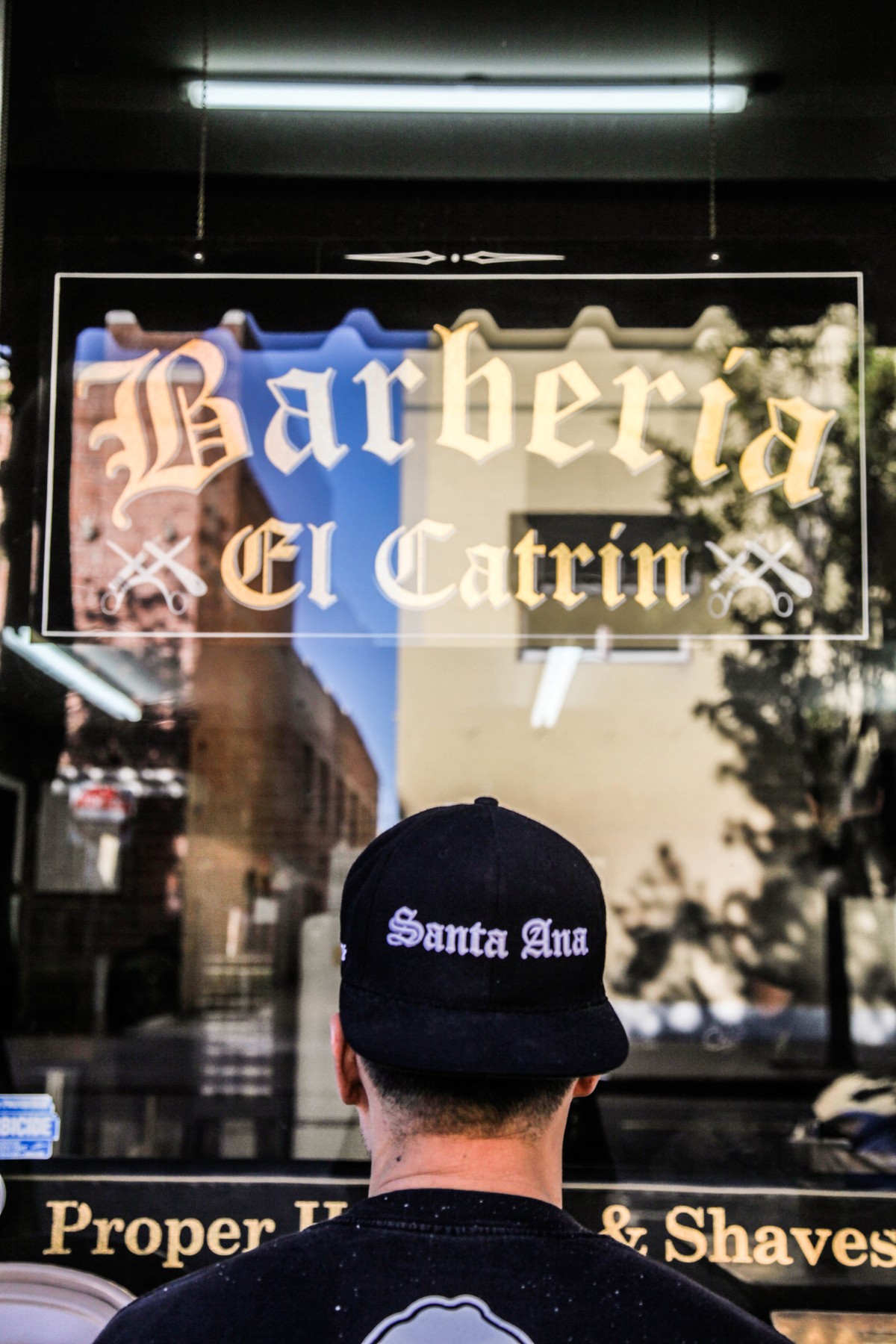
It was clear the real issue was our burning desire to address the change that’s happening. The people of Santa Ana were tired of the same land-swapping, pot-money-grabbing Mayor-for-Life Miguel “Don Papi” Pulido and everything he stood for. Our guitar-strumming, French-talking invisible chilango mayor isn’t pulling his weight these days with the locals, living beyond the outskirts of downtown. Back in ’86, when Pulido was first elected to the City Council, he was seen as the progressive vato who would surely back up raza on all corners of Santa Ana. But he sold out long ago, and thanks to the Centro Cultural de México folks and its pals, Pulido is finally getting term-limited out of office in four years.
But politics and protests can only go so far, cabrones. And those meetings provided me with a moment of clarity: The best way to maintain a vibrant, true Santa Ana is in the hands of those of us who grew up here—those who can march into the future anchored by knowledge of the past and present, who can articulate it, who know the best of the city and the worst, who can walk the line between our working-class essence and the desires of the younger generation for something more.
It’s the great untold divide in the city, the kind that breeds Chipsters who care more about their desires than protecting the past. My generation admires the hustle our fathers and mothers represented throughout their immigrant generation. However, my generation gets frustrated with them. We long ago realized the subordinate attitude acquired by our elders exemplifies a weakness developed as a byproduct of suppressive conditioning. It’s the plight of the paisa and his pocho children. It creates feelings of resentment, of shame, of rejecting your own culture for something else—the classic immigrant narrative, now amplified in our globalized, always-connected lives.

Being stuck in that type of self-hating conditioning is poisonous (and you see it too often in the homeboys who keep shooting one another up). The developers and politicians love this Freudian fuck-up in us and capitalize on it again and again. And that’s why Santaneros must come out of it in spades. We have activist groups galore, including the Centro, Latino Health Access, Santa Ana Boys and Men of Color, and Copwatch Santa Ana—all essential, all fighting necessary fights. But, as important as they are, they don’t appeal to the grand sweep of Santaneros. Our youngsters respond more enthusiastically to businesses such as Suavecito Pomade, Kilson Street, barbershops and restaurants. Many of these trailblazers were born and raised in Santa Ana, with the guts to start their dream during a recession while still maintaining their Mexican roots, both in their message and their services. They exhibit the qualities that we Santaneros crave and respect the most. We love it when the little guy (or mujer) can take a great idea that makes lots of money while still figuring out a way to keep it real.
They’re the best example for young Chicanos to look up to and inspire them to actually fight the gentrification going on, and it’s also the road easiest to travel. It’s been done before: My own father, with merely an elementary-school education in Mexico, zero English skills and no money, came to Santa Ana and opened two clothing stores that he and my mother ran for 23 years. This was Santa Ana in the ’80s, back when gun holdups were expected at least a couple of times a year, no matter what type of business you were running. Having a fusca put in your face while trying to earn a buck was a normal thing.
Every hipster who hashtags #dtsa, every building owner in downtown, owes these paisa-preneurs a debt of gratitude. Back then, whites were complaining these Mexicans would ruin the city, but the truth was far from it. Those small-business owners—not the artists, not the new restaurants, not the developers—saved downtown from becoming extinct and became an economic engire for the rest of the city. Those mexicanos didn’t stay in the past; they moved forward with what was around them and what they saw ahead. Simply put: Provide a quality, homegrown product while not forgetting where you’re from, and Santa Ana is yours.
[
* * * * *
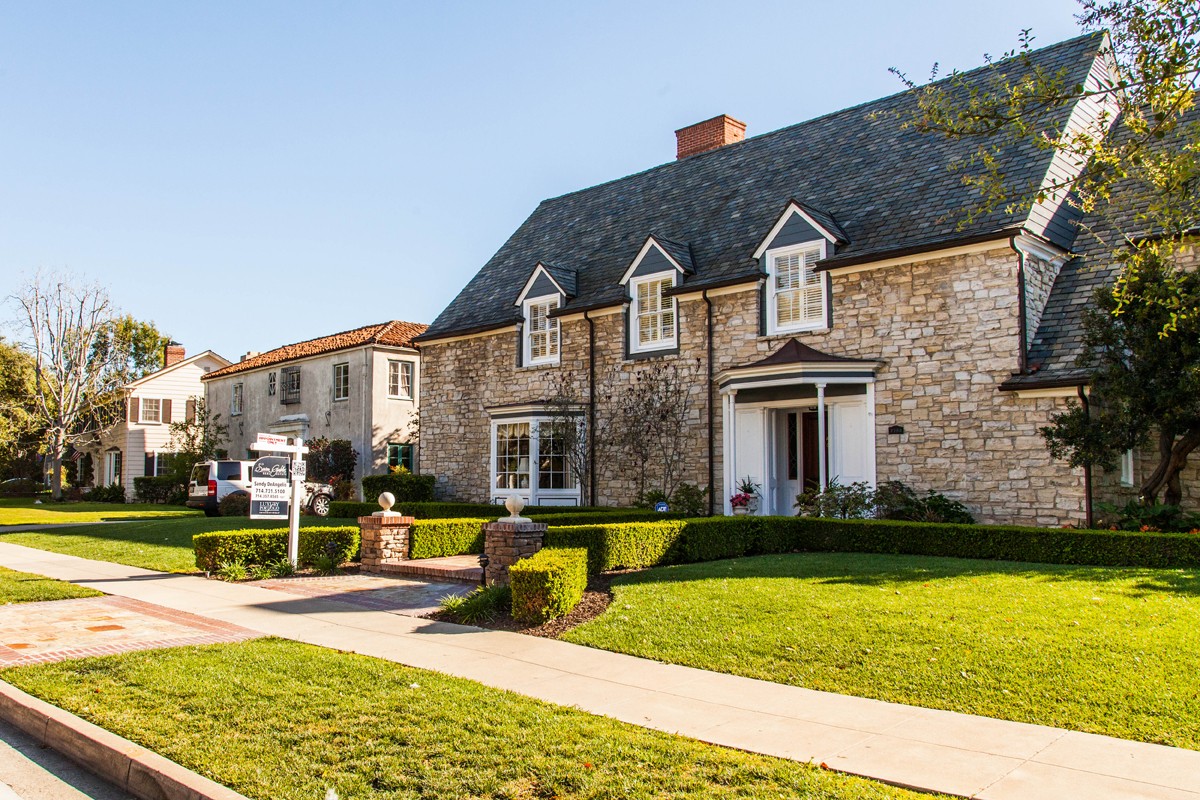
“Santa Ana, born and raised” is what I say when people ask me where I’m from. It feels amazing to say it and know it’s 100 percent true. The comments and opinions of others never distort that feeling, never enter my mind while I utter those five words. Growth and transformation come through pain, and a lot of that pain has forged our community in such a way that we can look at one another and recognize the same baggage—and how to move ahead.
The city’s movers and shakers keep ignoring this. The Santa Ana Arts Collective project, a $26.5 million affordable-housing project specifically for local artists, will soon take over a five-story tower. La Bodeguita, a former warehouse run by Centro volunteers that staged underground fandangos, is getting torn down for an affordable-housing project everyone expects to become another gentrifying front. New developments are slated for southeast, downtown, anywhere with vacant lots. But while these mulitmillion-dollar plans are getting approved, the rest of the city is idly watching and wondering, “What about us?”
Our politicians have made it clear: We won’t invest some real money or interest in the rest of Santa Ana unless it’s going to generate tourist dollars. And when it’s time, adiós, motherfuckers.
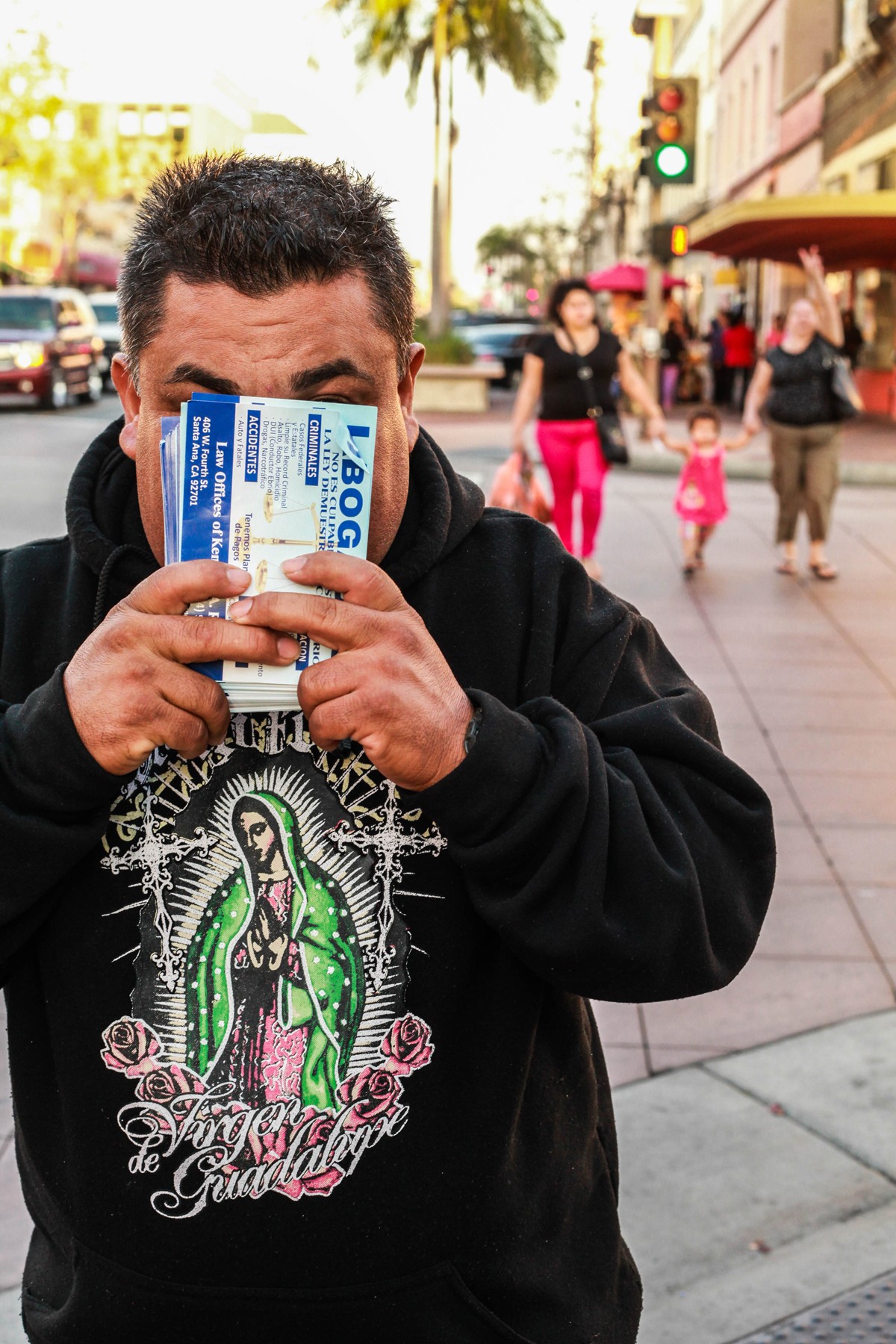
Activists fear what’s going to happen. But I don’t worry. We’ll never stop being who or what we are, no matter the amount of negative publicity or gentrification hurled our way—you can’t shake us. We’ll continue to rattle the walls of Orange County for decades to come and shape its future, whether the naysayers like it or not.
What’s that Gandhi saying liberals always like to quote? “Be the change that you wish to see in the world.” Change is heading to SanTana, and those of us who know and love the city have work to do to keep others from fucking things up. Trying to be another Portland or Austin or similar playground for outsiders is the last thing we need, the last thing on our mind. We’re too busy being ourselves, the only city in Orange County with the huevos to be everything that no other city can ever come close to matching, try as they might.
POSTSCRIPT: I finally got around to reading the comments on the Weekly’s FB page regarding my essay.
Fuckin’ eh…what a trip.
After reading the comments, I went to get a torta ahogada at the Chivas Torta lunch truck in front of the Northgate, on Mortimer and Fourth. Those tortas are always a sort of victory dance for me. I always get them whenever I get paid or do something that I feel deserves me splurging on them. I got my torta and sat down on the curb behind the truck and started eating it when I started to take notice of all the people hanging out all around the truck. There were five to six women and about two men eating tacos dorados and tortas ahogadas all around the truck. Each one of them were clearly Latinos and Latinas.
Within the first bites, I kept thinking about all the comments I had read, but after about a minute, I noticed two little girls that were hanging out together; they couldn’t have been older than five years old. They were speaking in broken Spanish to each other and occasionally throwing in some clear English. I watched them in silence as they teased each other and said things and messed around while I ate my torta along with the other adults. Then it dawned on me: That THIS essay wasn’t only meant for those that read it these days, but that it was also meant to stand as a testament for the battle that we’re waging these days in order for future generations to look back on and realize that the struggle was real; that we put ourselves on the line for them—the future generations.
Because of us, they’ll be able to look back on a Santa Ana that they weren’t able to experience and realize that there were actual people that fought in order to salvage a bit of that Santa Ana hard and long enough for them to feel its authentic self, even if it’s just for a little bit. We can’t be certain of how Santa Ana is going to be ten or twenty years from now, but we (at least I and those who lived it) know what it was like in the ’80s, and to this day. Those little girls will never know what it was like to live in and/or fully appreciate the Santa Ana that I wrote about in the essay, but at least they’ll be able to read about it in the future, if and when another wave of injustice (or similar bullshit) is hitting the city and their generation is called upon to stand up for a Santa Ana that once was, they’ll be able to read up and look back on what we lived and loved and defended so dearly, and hopefully realize that the fight that is in their hands is equally as important; similar to the fight that we went through fearlessly in order for its echoes to eventually reach their consciousness, many years later, and continue to fuel the passion of all future generations—including their generation.
 This essay is a time capsule, full of multiple points which convey our unwillingness to fade into the back pages that money, political power, and privilege can author. As I watched those two little girls horse around with one another, I kept thinking about what they were going to have to face in a few years and how they were unaware of the task they might possibly have to adopt. And I imagined them reading the essay years later, as young women, and wondering: What was it about this freakin’ city that inspired such thoughts and opinions? And what would be different during the time that they read it? What would be left? What would be missed? Even: Do they fuckin’ give a damn? Heavy, but possible.
This essay is a time capsule, full of multiple points which convey our unwillingness to fade into the back pages that money, political power, and privilege can author. As I watched those two little girls horse around with one another, I kept thinking about what they were going to have to face in a few years and how they were unaware of the task they might possibly have to adopt. And I imagined them reading the essay years later, as young women, and wondering: What was it about this freakin’ city that inspired such thoughts and opinions? And what would be different during the time that they read it? What would be left? What would be missed? Even: Do they fuckin’ give a damn? Heavy, but possible.
The haters and racists don’t bother me. This essay, in my mind while I was writing it, was not written with them in mind. Every word that I wrote was directed at future generations, of all ethnic backgrounds, and the youth of the like. I was thinking of them. And seeing those two little girls made me realize that all the shit-talkers I have had to fend off these days will die with us, but our words will still carry on long after we and those closed-minded people croak, and that that youth I was watching will still be able to, one day, pick up our words and thoughts; utilize them with pride in order to carry on what we initiated, and hopefully continue to fight for everything we stood for today.

